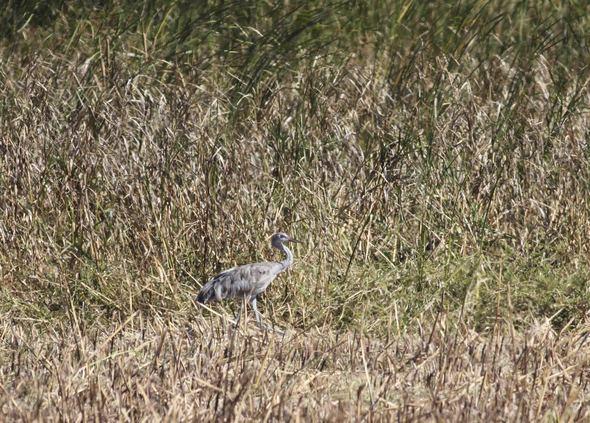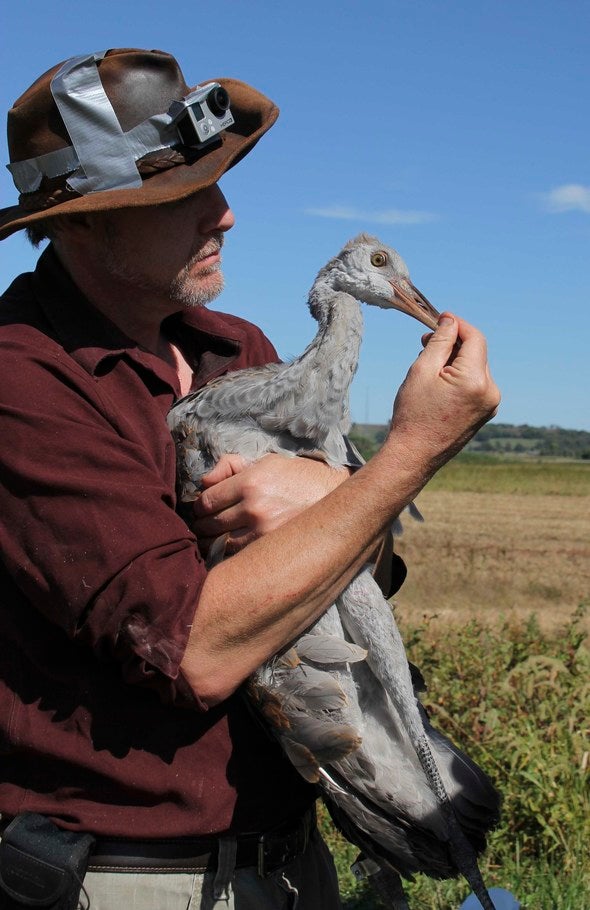
Xplor reconnects kids to nature and helps them find adventure in their own backyard. Free to residents of Missouri.


































Stay in Touch with MDC news, newsletters, events, and manage your subscription

Xplor reconnects kids to nature and helps them find adventure in their own backyard. Free to residents of Missouri.

A monthly publication about conservation in Missouri. Started in 1938, the printed magazine is free to residents of Missouri.




Mound City, Mo. – A young sandhill crane hatched and raised at the World Bird Sanctuary was recently released at the Squaw Creek National Wildlife Refuge in northwest Missouri. The release was a partnership effort among the Missouri Department of Conservation (MDC), World Bird Sanctuary (WBS), and the U.S. Fish and Wildlife Service.
This was the first release of a captive-hatched colt, or juvenile, sandhill crane in Missouri. The colt is the offspring of a pair of sandhill cranes at the World Bird Sanctuary at Valley Park, Mo., in the St. Louis area.
Walter C. Crawford, Jr., the late founder and executive director of World Bird Sanctuary, acquired the parent cranes two years ago from an organization in Wisconsin. The pair laid and faithfully incubated the egg, then raised the youngster, all under the watchful eye of Crawford. The release of the crane into the wild in Missouri was to boost the species in Missouri and also to honor Crawford, said Joe Hoffmann, WBS manager.
World Bird Sanctuary is dedicated to saving birds, preserving Earth's biological diversity and sustaining natural habitats. MDC helped WBS transport the young sandhill crane to western Missouri and assisted with release arrangements. The bird was released at a wetland in the vicinity of a pair of sandhill cranes that has frequented the refuge all summer. Biologists hope the young crane will join that pair or other sandhill cranes that visit the refuge.
Sandhill cranes are somewhat rare in Missouri and a species of conservation concern within the state. But they migrate through neighboring Nebraska and Kansas in large numbers and their populations are stable nationally. A few pairs have successfully nested in Missouri in recent years, said Brad Jacobs, MDC ornithologist. Squaw Creek officials said a few pairs have nested and raised young at the refuge in recent years.
Sandhill cranes are among the largest birds frequenting wet prairies and dry grasslands. They are gray in color, up to four feet from head to tail, and stand on very long, graceful legs. Adults have long, black bills and a red color patch on their head. Many sandhills migrate from Canada and the northern United States to spend the winter in large concentrations. They overwinter in groups of up to 10,000 birds in California, Arizona, New Mexico and Texas. The Great Lakes crane population winters in Florida and along the Gulf Coast.
"They're a big bird and they're very stately in how they behave and walk around," Jacobs said. "They have a vocal tremolo you can hear from miles away, a woody, staccato sound."
Despite their long necks and legs, and wide wingspans, sandhill cranes are graceful when airborne. They fly in V-formations, and pairs and their young migrate together with flocks.
"Their flight is so smooth," said Corey Kudrna, wildlife refuge specialist at Squaw Creek. "Their wingbeats are smooth and they have very controlled flight."
Jacobs said sandhill crane nesting populations are growing in the upper Midwest, so Missouri may see more nesting pairs in the future.
If the sandhill crane pair at the World Bird Sanctuary raises more young colts, they also may be released into the wild in Missouri, Hoffmann said.
For more information on sandhill cranes in Missouri or MDC conservation programs, visit mdc.mo.gov/node/24555%20.
For information on the World Bird Sanctuary, visit www.worldbirdsanctuary.org/. The World Bird Sanctuary thanks the Kathryn G. Favre Foundation for support for the sandhill crane release.